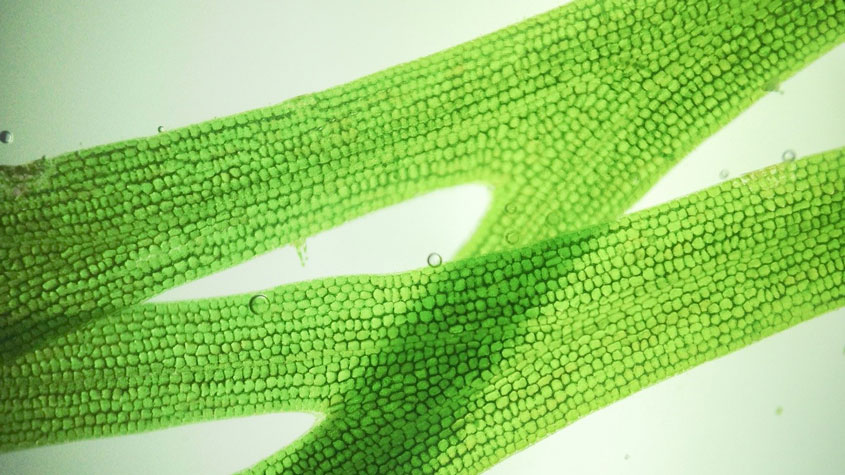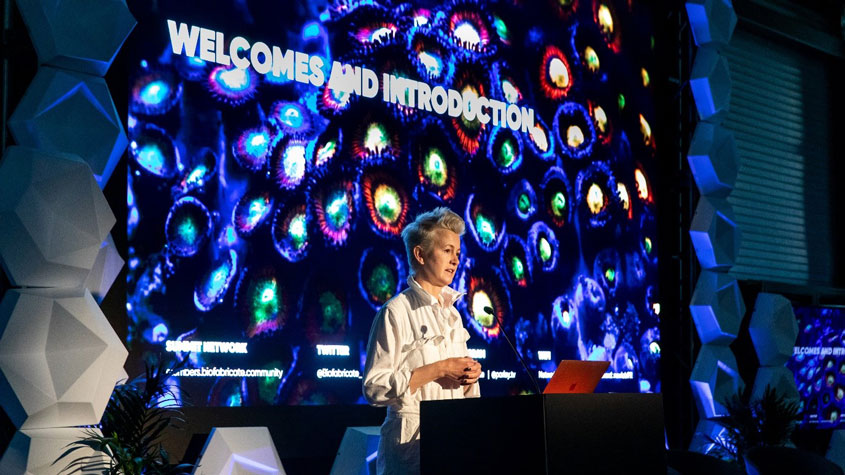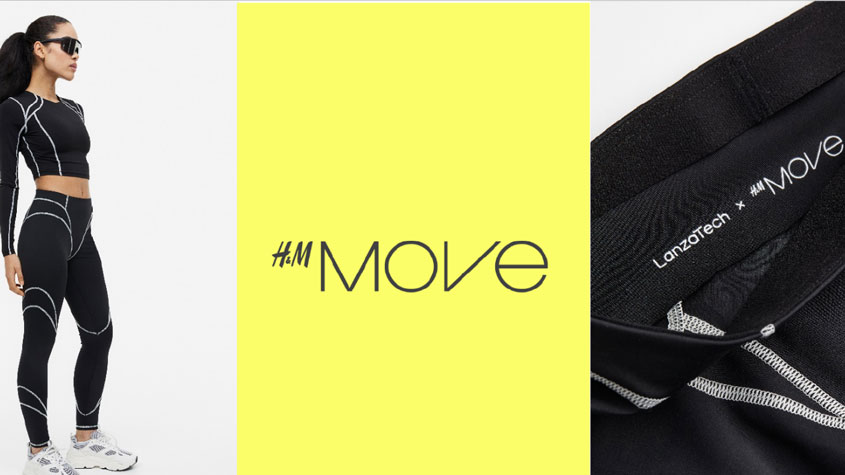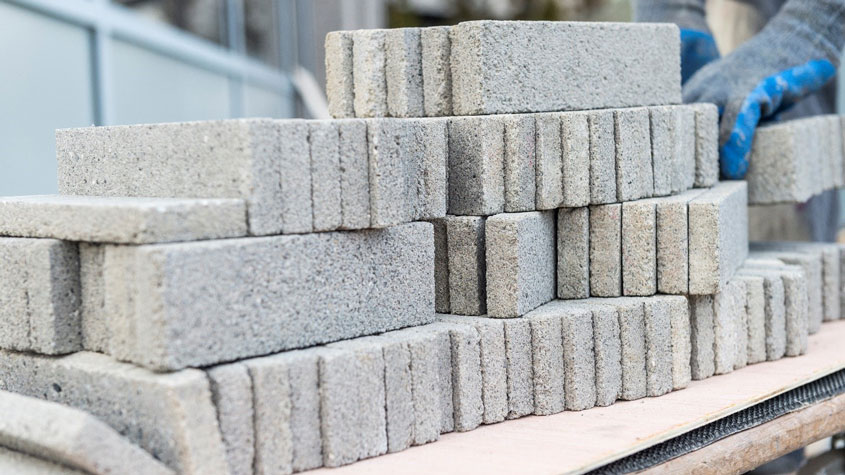By Catherine Jewell, Information and Digital Outreach Division, WIPO
"We need a material revolution, and we need it now,” proclaimed Suzanne Lee, the CEO and Founder of Biofabricate, in her 2020 Ted Talk on “biofabrication”. Biofabricate is a “sustainable biomaterial innovation” boutique that is educating companies on how to use nature-based technologies to create a “new material world.” By embracing biofabrication – which employs advances in biotechnology to produce and use raw materials for the manufacture of products in sectors such as fashion, sports and construction – instead of relying on factory farming and fossil fuels, we could significantly reduce CO2 emissions and help curb climate change.
Lee spoke with WIPO Magazine about her road to biofabrication and why we must take microorganisms seriously as the fabric of the future.
We need a material revolution, and we need it now.

Your journey began with the “Biocouture” project. Can you tell us how that came to be, and what you were seeking to achieve?
I'm a fashion designer by training. I was curious about the future of fashion, and in 2002, I was doing research for my book, Fashioning the Future: Tomorrow's Wardrobe, when I had that conversation with my biologist-friend David, who owned his own materials company. He proposed the incredibly provocative notion that instead of growing plants in fields or raising animals for meat and leather, or even using petrochemicals, we could harness microorganisms to grow the fabrics and other materials we need.
It was one of those light bulb moments that changed everything for me.
We set up a collaboration with funding from the UK Arts and Humanities Research Council.
The goal was to prove we could grow materials for clothing using microbes. It was the coming together of haute couture, the very hands-on making of a garment, with biology – hence, “biocouture.”
We used a kombucha culture, which is a mix of yeast and bacteria. All you need to do is feed the bacteria with sugar and they create cellulose fibers, which naturally self-assemble to form a non-woven sheet material.
Eventually, I had about 20 bathtub-sized tanks growing sheets of material in my London studio. And as a designer, I learned how to treat the material and turn it into something that could be used in a garment, a shoe or a bag. I had a lot of interest from the press, and some brands, but I was 20 years too early. Very few people were talking about sustainability in 2002.
After that, I switched from researching fashion to researching biotech. I spent the next 10 years in Europe going to conferences on synthetic biology, trying to understand what biology could do and whether it is possible to grow materials using microorganisms.
Now, 20 years later, I'm advising startups that are basically copying the Biocouture process, and they're all getting funded.

How did you come to establish Biofabricate after that?
In 2014, six months after having moved to New York to join Modern Meadow, a biotech company, as their chief creative officer, I organized the first Biofabricate summit. I saw there was a clear need for an event to bring together the creatives, the scientists, the investors and the brands to learn from one another and ideally spark new companies. I thought it was going to be a one-off event, but we've been running them ever since.
Biofabrication is using microorganisms to produce materials and ingredients for use by humans.
What exactly is biofabrication?
Biofabrication is using microorganisms to produce materials and ingredients for use by humans. That could be anything from fuel to food to fibers. We think about organisms, such as bacteria, yeast, algae and fungi, as the cell factories of the future. Instead of using fossil or precious land resources to produce feedstocks directly to make things, we are looking to harness biology and its microorganisms to produce the high-value ingredients humans need. We're only just starting to be able to do that. But I think, over the next few decades, it's going to be incredibly transformative.
Tell us more about what Biofabricate does.
Right now, we're building an educational platform for brands to learn more about biomaterials. We're creating a small reference book for the creatives who are struggling to get their heads around all of these new emerging technologies. And then of course, we do the Biofabricate summit and work with various major global brands on their biomaterial innovation strategies and programs. Essentially, we're doing what we can to grow the sector by bringing people together who can use biomaterials to create consumer goods.
Essentially, we're doing what we can to grow the sector by bringing people together who can use biomaterials to create consumer goods.
What do you find so exciting about working with microorganisms?
As a designer, the creative opportunity around working with nature is just incredibly inspiring. People who come into this field are in awe of what nature can do.
Now that we have gene-editing tools like CRISPR, we can start to design in collaboration with biology, which has the potential to unlock all kinds of new functionalities that we've never had access to before. For example, today, people are studying the way spiders produce the very strong, silk-like protein to weave their webs in order to reproduce something similar, using bacteria or yeast cells.
People who come into this field are in awe of what nature can do.
What are some other real-world examples of Biofabrication?
One of the very first conversations we had at Microsoft was around using DNA to store data. The data we're trying to store in the world is growing exponentially. Biology is where that will go. There's only so much data you can condense onto a silicon chip, so we have to look for more efficient ways to store it. Everything I look at, touch and experience, I see through the lens of biology and what the design of biology might offer. Even the tallest skyscrapers. What happens when we can actually grow that structure?

Everything I look at, touch and experience, I see through the lens of biology and what the design of biology might offer.
When do you see biofabrication really hitting the mainstream?
There are some biofabricated fashion items emerging in stores now (find examples box). Like all new technologies, when they first hit the market, they are expensive. It's a supply and demand issue. Over the next few years, I predict we'll see various products emerge at the premium, luxury level. Beyond luxury fashion, we've already seen various automotive concept cars with interiors made from biomaterials rather than animal or petrochemical materials. But it's probably going to be a while before it goes mainstream in the automotive sector because the volumes are so huge. We're also seeing interesting developments in the field of construction, which, at present, is a very big carbon emitter. In the next year or two, reading about things made from algae, fungi or bacteria, will become commonplace.
In the next year or two, reading about things made from algae, fungi or bacteria, will become commonplace.
What are the opportunities for startups working in this space?
One of the first brands to embrace these technologies is Adidas. Performance sport brands are generally early adopters of cutting-edge innovations. If you're a startup trying to understand the market fit of your product, and the performance and functionality needs you have to meet, it's great news for you to be able to partner with a big brand like Adidas. Such partnerships really speed up the innovation process. The brand can also introduce you to supply chain partners that you wouldn't otherwise have ever been able to access. These types of partnerships are really critical, as they match the startup with the ultimate user, even if they're not going to have access to it for another five years. Startups in this area need to work with a big brand early on to fully understand the challenges they will face and what success looks like.
What role does Biofabricate play in this process?
We operate at the nexus of startups, investors and brands, which is very dynamic and where the magic happens. It's all about exposing brands who don't know what's possible to some of the most innovative startups on the planet and then bringing in the investors so they can see there is market demand for these biomaterials. The missing piece is generally the need for more funding to keep the startups going long enough to scale and supply the market. We get very excited about who we can bring together to speed that process up more broadly.
We operate at the nexus of startups, investors and brands, which is very dynamic and where the magic happens.
What are the biggest challenges facing small startups in this space?
In 2023, funding is going to be one of the biggest challenges for startups. We need to do all we can to attract investment. Some of the technologies needed to scale production are very capital intensive. For example, to grow millions of square meters of mycelium-based materials requires a whole new facility. It’s going to take time, experimentation and money.
We also need regulation to push us in this direction so that more startups get support, and more people are encouraged to start new companies. We need governments to be thinking about new infrastructure for a bioeconomy in the way they have supported other industries.
Understanding “Bio” Material Innovations: a primer for the fashion industry
In 2020, Biofabricate teamed up with Fashion for Good to produce a report to educate the fashion industry on biomaterial technologies in order to promote a more comprehensive understanding of the landscape and provide a standardized language to inspire innovation.
Do you think there's going to be a problem with consumer acceptance?
Not at all. Consumers are so excited. If anything, there's a lot of frustration because they have read about these innovations but don't understand why they’re not yet available or, if they are, why they’re not at a price they can afford.

Consumers are so excited. If anything, there's a lot of frustration because they have read about these innovations but don't understand why they’re not yet available.
How are intellectual property rights supporting the development of the biofabrication field?
I never thought I'd have my name on multiple patents, but I do, and they all relate to biofabricated materials. There is opportunity for so much novelty in the way we are producing these materials and a need to protect those ideas. Patents are a prime concern because so much of this industry is funded by venture capital.
Patents are a prime concern because so much of this industry is funded by venture capital.
Every startup we work with is thinking about their intellectual property (IP) in different ways, whether protecting it by using patents or preserving their knowledge internally as trade secrets. You're not going to spend that amount of money on an innovation and not think about IP from day one.
How would you like to see the field of biofabrication evolve?
I would love to see the best technologies get to market and be winning and receiving more investment so they continue to scale.
I would also like to see the “stop-gap” innovations that are out there disappear because many of these hybrid solutions still contain petrochemicals. We have to ensure the solutions we support are authentically bio, and avoid any risk of green washing.
What is your message to aspiring young designers and/or scientists?
Don't be pigeonholed. Here I am, leading a movement around biomanufacturing as a fashion designer. I have no science training and am self-educated in this field. It's my refusal to be pigeonholed and my openness to working with people from other disciplines that has brought me to where I am today. Innovation happens when you throw people together from very different backgrounds.

Biofabrication at work
In 2022, clothing brand Zara sold party dresses made of polyester produced from bio ethanol that came from the carbon emissions of a steel mill.
Stella McCartney has a range of handbags made of mycelium leather.
Bio Mason is a US company that grows cement using natural soil microbes to harden building materials. The cement blocks they manufacture are grown in ambient conditions and are three times stronger than concrete. “If we could replace the 1.2 trillion fired bricks each year with biofabricated bricks, we could reduce CO2 emissions by 800 million tons every year,” said Lee in her 2020 Ted Talk.


